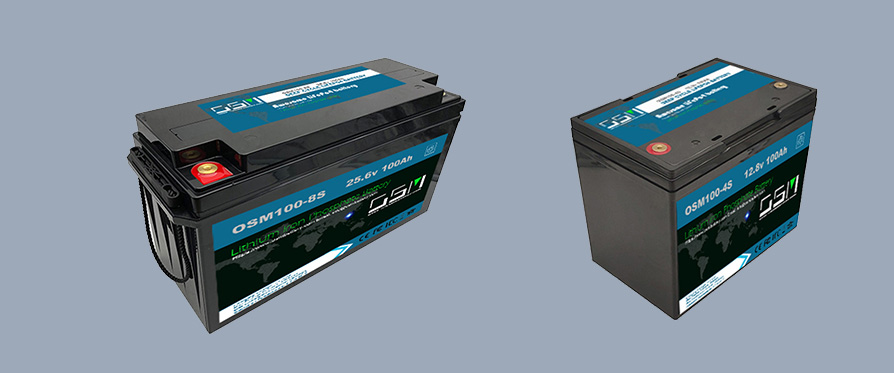Rack Lithium Batteries
Are you ready to dive into the electrifying world of rack lithium batteries? These compact powerhouses have been making waves in various industries, offering a reliable and efficient energy storage solution. But wait, there’s more! There’s also an ongoing battle between two prominent contenders in the realm of lithium batteries: NCM (Nickel Cobalt Manganese) and LiFePO4 (Lithium Iron Phosphate). In this blog post, we’ll explore their strengths, weaknesses, and help you navigate through the ultimate decision-making process. So fasten your seatbelts as we unveil the thrilling power play between NCM and LiFePO4 batteries!
The Battle Between NCM and LiFePO4 Batteries
When it comes to rack lithium batteries, there is an ongoing battle between two prominent contenders: NCM (Nickel Cobalt Manganese) and LiFePO4 (Lithium Iron Phosphate). These two types of batteries have distinct qualities that make them suitable for different applications. Let’s dive into the pros and cons of each to shed some light on this power play.
NCM batteries are known for their high energy density, which means they can store a significant amount of energy in a compact size. This makes them ideal for applications where space is limited, such as electric vehicles. Additionally, NCM batteries offer excellent performance in terms of voltage stability and charge/discharge efficiency. However, one downside of NCM batteries is their relatively lower lifespan compared to LiFePO4 batteries.
On the other hand, LiFePO4 batteries are renowned for their exceptional cycle life and safety features. They can endure thousands of charge-discharge cycles without significant capacity loss or degradation. This makes them perfect for long-term use scenarios like solar energy storage systems or backup power solutions. Moreover, LiFePO4 batteries have a higher thermal stability compared to NCM ones, reducing the risk of overheating or fire hazards.
Choosing between NCM and LiFePO4 depends on several factors you need to consider carefully. If energy density and size matter more than longevity in your application, then going with NCM might be the right choice for you! On the contrary, if durability and safety are top priorities while sacrificing some energy density potential – opting for LiFePO4 would be wise.
In conclusion – both battery types have unique advantages depending on your specific needs! Understanding these pros and cons will help you make an informed decision when selecting rack lithium batteries that align with your requirements perfectly!
Pros and Cons of NCM Batteries
NCM batteries, also known as nickel-cobalt-manganese batteries, have gained popularity in recent years due to their high energy density and improved performance. However, like any technology, they come with their own set of pros and cons.
One major advantage of NCM batteries is their ability to provide a higher energy density compared to other lithium-ion battery chemistries. This makes them an attractive option for those looking for affordable energy storage solutions.
However, there are also some drawbacks to consider when it comes to NCM batteries. One concern is their potential for thermal runaway or overheating if not properly managed. This can lead to safety hazards and the risk of fire or explosion.
Additionally, NCM batteries have a shorter lifespan compared to LiFePO4 batteries. Over time, the capacity of an NCM battery may degrade faster than its LiFePO4 counterpart.
Furthermore, it’s worth noting that while NCM batteries offer high energy density, they typically have lower power density capabilities. This means they may not be suitable for applications requiring high levels of power output.
Pros and Cons of LiFePO4 Batteries
LiFePO4 batteries, also known as lithium iron phosphate batteries, have gained significant popularity in recent years due to their unique advantages. Let’s take a closer look at the pros and cons of using LiFePO4 batteries.
One of the major advantages of LiFePO4 batteries is their exceptional safety features. Unlike other lithium-ion battery chemistries, LiFePO4 batteries are highly stable and less prone to thermal runaway or explosion. This makes them an ideal choice for applications where safety is paramount.
Another key advantage of LiFePO4 batteries is their long cycle life. These batteries can withstand thousands of charge-discharge cycles without significantly degrading their performance or capacity. This means that they offer a longer lifespan compared to other types of lithium-ion batteries, making them a cost-effective solution in the long run.
LiFePO4 batteries also have a high energy density, which means they can store more energy in a smaller and lighter package. This makes them suitable for portable devices and electric vehicles where weight and space are crucial factors.
Factors to Consider When Choosing Between NCM and LiFePO4 Batteries
When it comes to choosing between NCM and LiFePO4 batteries for your rack lithium battery system, there are several factors you need to take into consideration. Both types of batteries have their own advantages and disadvantages, so it’s important to weigh these factors before making a decision.
1. Energy Density: NCM batteries generally have a higher energy density compared to LiFePO4 batteries. This means that they can store more energy in a given size or weight. If space is limited and you need maximum power in a compact form factor, NCM batteries may be the better choice.
2. Safety: LiFePO4 batteries are known for their superior safety features compared to NCM batteries. They are inherently more stable and less prone to thermal runaway or explosions, making them ideal for applications where safety is paramount.
3. Cycle Life: LiFePO4 batteries typically have a longer cycle life than NCM batteries. This means that they can undergo more charge-discharge cycles before their capacity significantly degrades. If long-term durability is crucial for your application, LiFePO4 batteries may be the way to go.
4. Cost: In general, NCM batteries tend to be less expensive than LiFePO4 ones due to the difference in materials used and manufacturing processes involved. If budget constraints are an important consideration for your project, NCM batteries might offer a more cost-effective solution.
5. Environmental Impact: While both battery types are considered greener alternatives compared to traditional lead-acid counterparts, LiFePO4 has an edge when it comes to environmental impact as it contains fewer toxic materials and heavy metals.
6. Application Specific Requirements: It’s essential also consider specific requirements of your application such as operating temperature range, discharge rate capability and voltage stability over discharge period.




